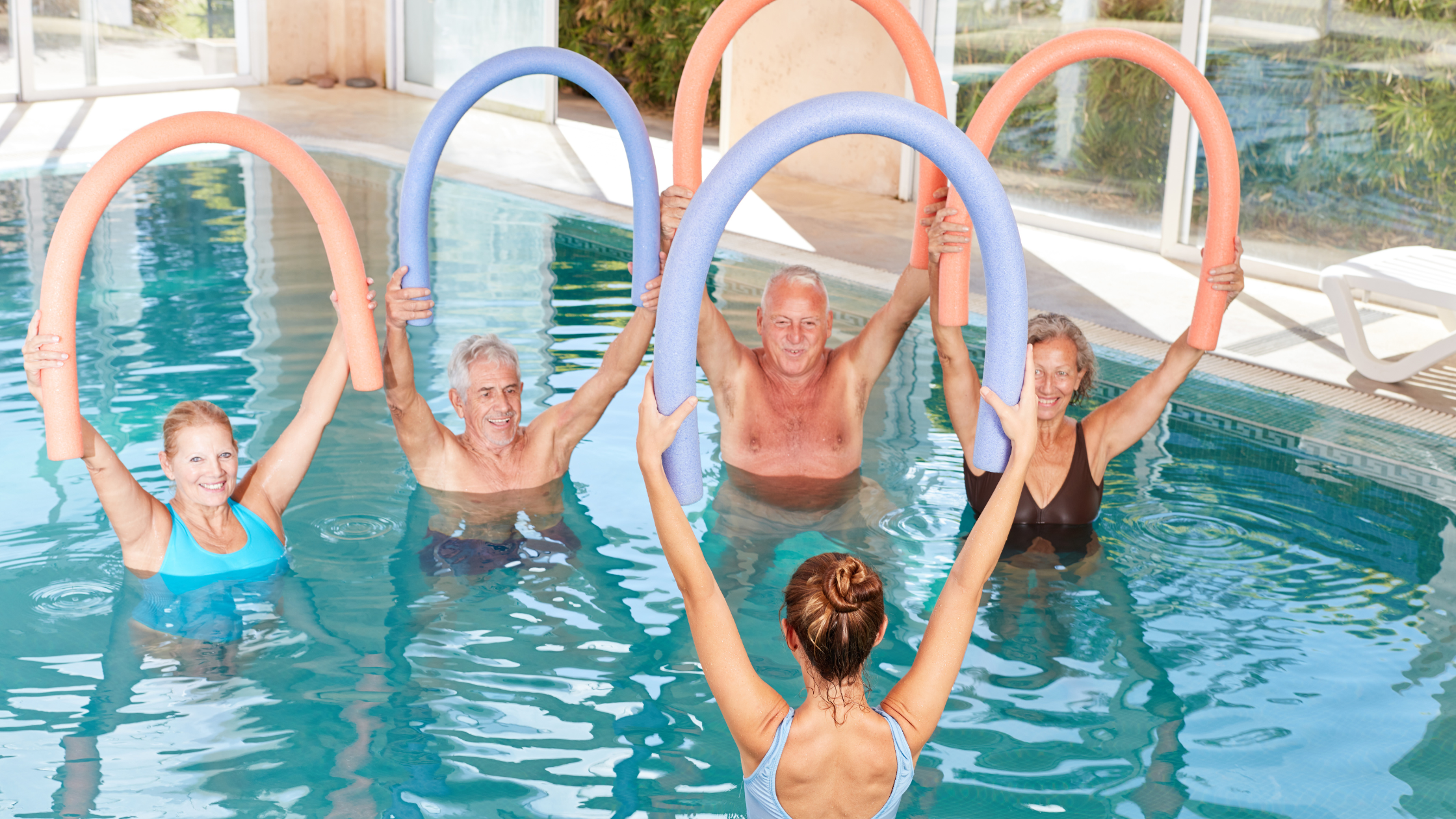
How Aquatic Therapy Can Help Ease Pain
Anyone with stiff joints or chronic pain knows how relaxing it can be to slip into a warm bath at the end of the day. This is because the water pressure alleviates the pressure you place on your joints. There is a lot of science behind this buoyant force, and it is the same reason as to why you feel weightless in water. When you live with chronic pain, you know that any relief is welcomed. Many pain specialists and physical therapists recommend some type of water therapy for patients with fibromyalgia, osteoarthritis, or chronic joint pain. This does not always mean participating in group water aerobics. Aquatic therapy can also include floating therapy and water yoga. Water Aerobics for Osteoarthritis People with osteoporosis benefit greatly from doing water exercises. This allows their muscles to stretch and strengthen using the gentle resistance of water. Stretches like lifting your knees to your chest and using the side of the pool to do leg lifts and arm stretches are good for your muscles and improve your range of motion. Water aerobics are another type of therapy that prove beneficial for patients with osteoarthritis. Walking in the water, water jogging, and other movements that make your hip joints more limber build strength without having to exercise on a treadmill. 2. Floating Therapy The most simple type of aquatic therapy is floating therapy. This is to simply float. This can be done floating vertically, so that your body is deeply emerged in water. This lets the water pressure have a more therapeutic benefit - the deeper you go, the stronger the pressure. Floating can lower your blood pressure and improve neurological conditions. Another type of floating that has profound neurological benefits and can aid in relaxation therapy is floating in a super Epsom salt bath. This is a shallow, high-buoyancy tub that focuses on sensory deprivation. Sensory deprivation is a relaxation technique that helps eliminate external stimuli that affects pain. 3. Hot Tub Therapy Patients with back pain regularly find relief from their pain when heat is applied. A take on heat therapy, hot tub therapy combines relaxation from aquatic therapy and the warmth of heat therapy. This also helps patients with osteoarthritis and fibromyalgia. The warm, bubbly water lessens joint stiffness and pain. It also boosts blood flow to the affected area. Be sure to follow your physician’s recommendations regarding hot tub therapy. The heat can occasionally cause headaches or dizziness, so always follow healthy hot tub regulations. 4. Water Yoga Just like on dry ground, doing water yoga is a well-known rehabilitation technique for patients with chronic pain. However, water yoga adds in a natural resistance. Water pressure encourages deeper, diaphragmatic breathing which is important to the practice of yoga. Yoga is good at preventing muscle soreness, reducing low back pain, and improving neurological conditions. Many yoga stretches are more comfortable when you have the water pressure working against you instead of gravity. It can be easier to sustain the poses and make the poses more effective. How Aquatic Therapy Helps Ease Chronic Pain
Contact the team at First State Orthopedics to learn more about caring for orthopedic injuries and to learn more about therapies and treatments available.
Quick Links
Schedule an Appointment
* indicates a required field.
